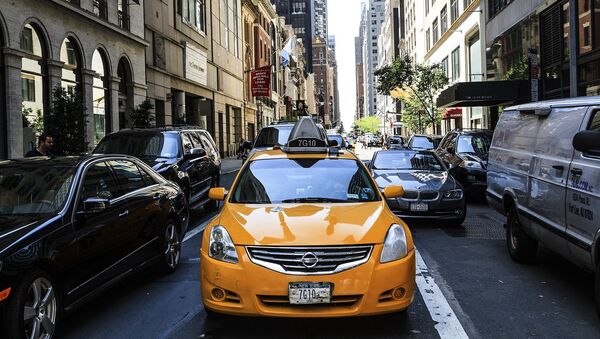Kristian Rouz — Volumes of car loan delinquencies have risen to an eight-year high last month, and auto loan-backed bonds look increasingly toxic, with skyrocketing yields and plummeting value. The next big threat to the US financial system has materialised in one of the hottest segments of the lending market, which is car loans, and now commercial banks have started to pull out of the toxic debt.
The question is, however, if it's too late to swerve away from the looming car loan crash, and if the rising volumes of non-performing loans (NPLs) in the automotive sector have reached the point of no return.
Nearly a decade of ultra-low Federal Reserve base interest rates have driven consumer demand for credit, which turned out particularly intense in the US car market. However, the weak post-Great Recession economic recovery, wage stagnation and lack of higher-paying jobs have left many individual borrowers struggling to service their debt obligations. The car loan market started to feel the pain in early 2016, and by this point, the rising levels of delinquencies have put the $1-trillion auto loan market on the verge of systemic failure.
Out of the entire $1.16-trillion car loan market, delinquent loans account for 3.8 percent, which does not seem systemically dangerous. However, the Federal Reserve is more concerned about the skyrocketing levels of car loan delinquencies in the subprime segment, where NPLs constitute about 20 percent of total debt.
Aside from that, with many US car dealerships desperate to sell any cars at all amid low consumer enthusiasm, some of them are willing to cut legal corners in order to offer potentially insolvent borrowers new car loans. These include tweaking a borrower's yearly income figures or employment status on a loan application, and this type of car loan fraud is also becoming an issue.
"The auto industry has also become intensely competitive, which has led to price competition, the loosening of credit standards, and higher charge-offs," credit rating agency Standard & Poor's said.
Currently, lenders are not able to collect some $1.1 bln in consumer auto debt. Commercial lenders tightened their car loan underwriting standards earlier this month, but this might only encourage car loan fraud. At this point, about 1 percent of car loan applications include false information, according to data from research company Point Predictive. This figure is poised to rise as interest rates rise and overall credit availability shrinks.
Back in 2009, the share of fraudulent mortgage applications was just above 1 percent, which makes the current auto loan situation strikingly similar to mortgage market dynamics almost a decade ago.
"We see an extraordinary amount of parallels between the auto and mortgage industries, in terms of the rising levels of hidden fraud," Frank McKenna of Point Predictive said.
Commercial banks, in addition to tightening their underwriting standards for new car loans, are also decreasing their exposure to this increasingly toxic segment of the debt market. Wells Fargo, one of the biggest car lenders in the US, posted an annualised 29-percent decline in car loan originations in Q1 2017. This decline in car loan issuance is the biggest in at least five years for Wells Fargo. Moreover, other prominent auto lenders, such as JP Morgan Chase & Co., Santander Consumer USA, and Ally Financial, all reported similar dynamics in car loan issuance.
"A very accommodating finance environment had been in place for some time," Bruce Clark of the credit rating company Moody's Investors Service said. "What you're seeing right now is a pullback and the resulting pressure on unit vehicle sales."
Although lenders most often cite tighter Fed monetary policies and the subsequent realignment in the consumer credit market as the main reason for the decline in car loan origination, auto loan delinquencies are referred to as a realistic threat.
"It's been an overheated sector," Greg Carmichael of Fifth Third Bancorp said. "The auto business just isn't as attractive right now."
Overall, the total amount of debt outstanding in car loans has increased by over 50 percent since 2010. With household debt having also increased in other segments, such as credit cards, mortgages, student loans, etc., the credibility of an average borrower has decreased regardless of their credit score. Santander Consumer USA, a leading subprime auto loan provider, for example, stopped accepting credit card payments in an attempt to stave off the ever-mounting indebtedness among their clients. Car repossessions — a distant echo of mortgage foreclosures from a decade ago — are on the rise as well.


